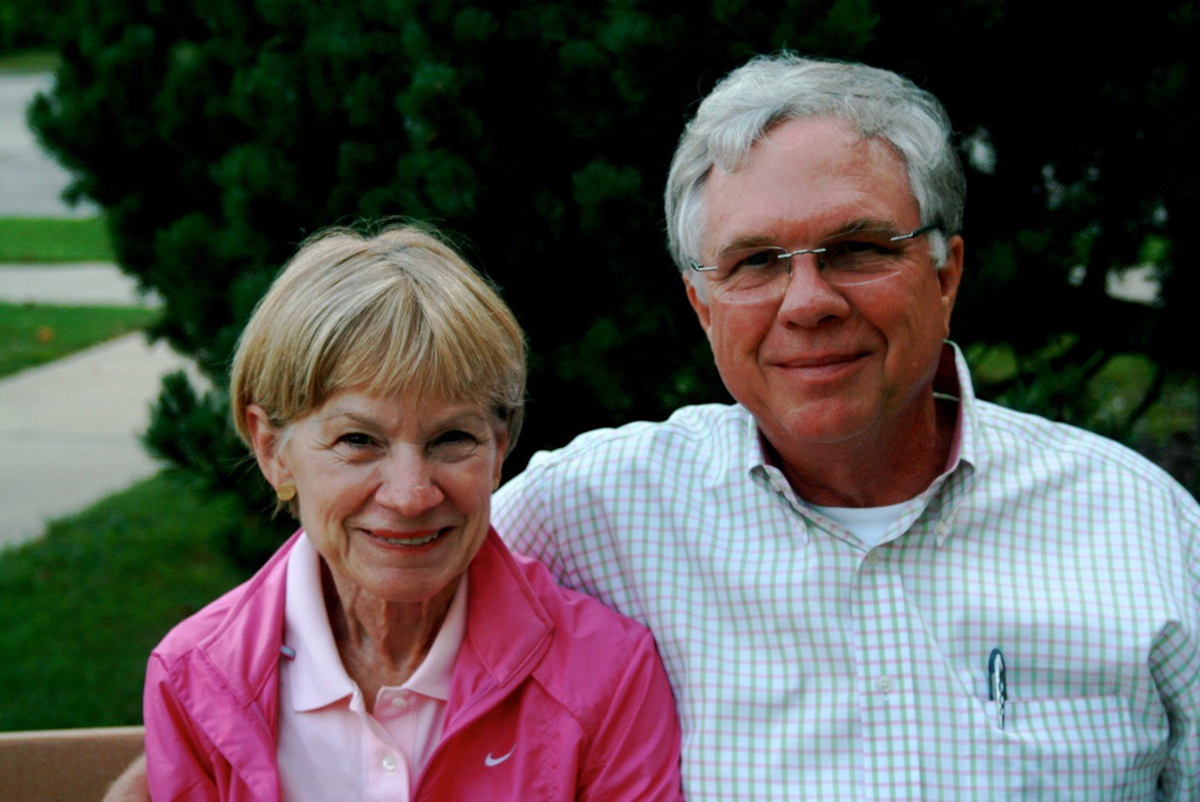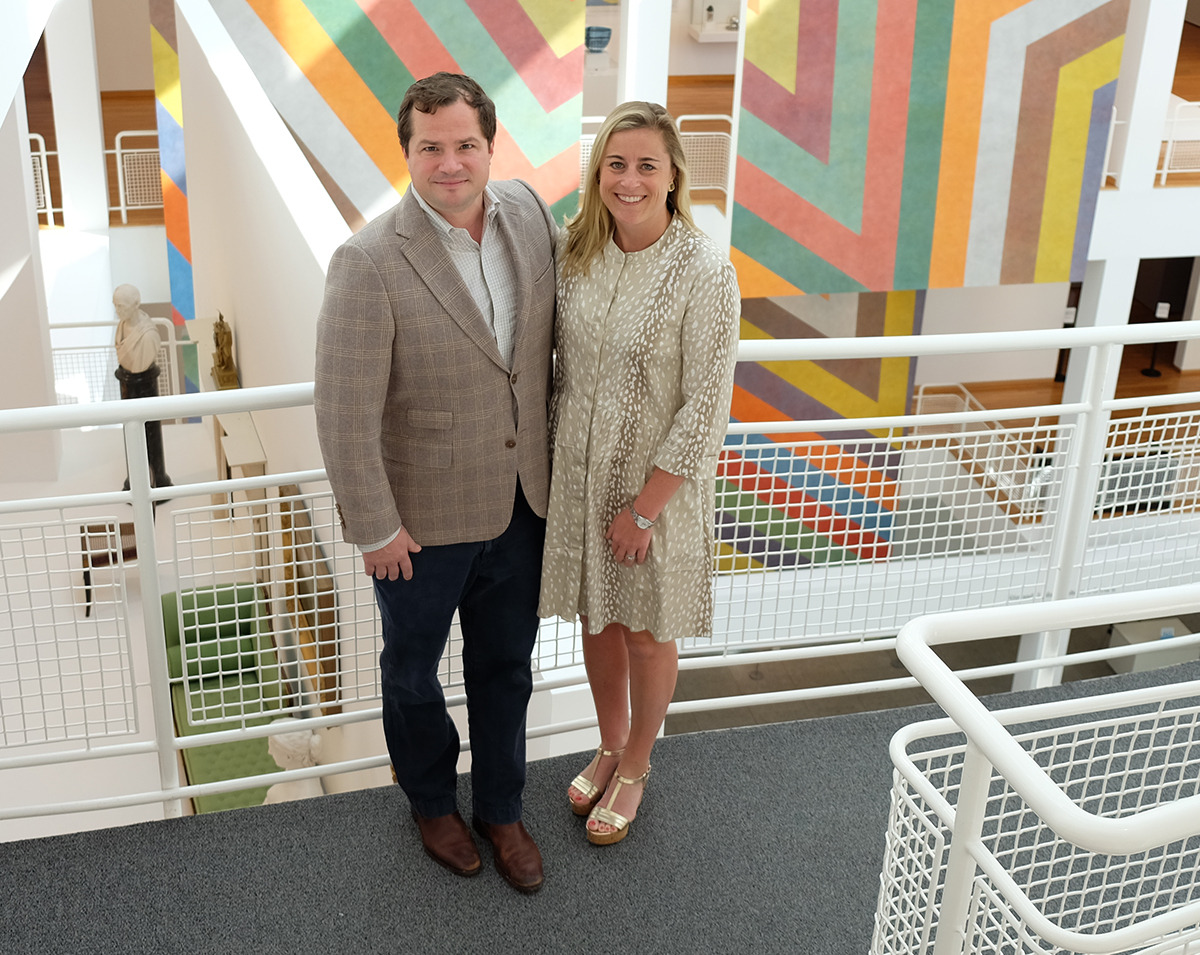What began as the need to decorate a new vacation home on Lake Lanier would lead to a transformational gift for the High and an ambitious vision for the Museum’s future, setting the course for a family’s legacy of leadership and philanthropy.

Dan and Merrie Boone.
Shortly after moving to Atlanta in 1976, Dan Boone purchased a cabin with his business partner to enjoy with family and friends on Lake Lanier. To begin decorating the empty home, he went to Dahlonega and discovered a small shop on the square selling paintings. As Dan explains, “I was drawn to these paintings by an artist named Wallis who had only recently started painting in his 70s and was totally self-taught, and they were what we could afford. Paintings that were $25, $35, and $40 and depicted scenes like Noah’s Ark, fields with chickens and houses. They were flat, not a whole lot of depth, but these colors, forms and subjects were so attractive. That was the first self-taught art we bought.” Dan and his late wife, Merrie, would begin to immerse themselves among the galleries and the artists working in the self-taught tradition. One year at the annual Slotin Folk Fest, Dan met the owners of Gilley’s Gallery from Baton Rouge, Louisiana. “They had the best collection and representation of Clementine Hunter and I was struck by her art,” he remembered, “the primary colors, the movement, the emotions, and the passions she expressed. This started us on a journey which continued through the 80s and 90s and on through today.”
During that time, Dan served on the board of the High for nine years (elected as a Life Director on May 2021) and joined the High’s Friends of Folk Art support group. He began working with then folk art curator Susan Crawley on supporting new acquisitions. Following her departure from the High in 2012, Dan approached the High’s leadership about endowing the Curator of Folk and Self-Taught Art position. “I felt we had to establish an endowed curatorship to ensure the High’s commitment to Southern Self-Taught art,” he explained.

Watt and Katie Boone. Photo by CatMax Photography.
Katherine (Katie) Jentleson joined the High in 2015 as the inaugural Merrie and Dan Boone Curator of Folk and Self-Taught Art. Since then, she has grown the collection by more than five hundred objects, including major acquisitions that reinforce the High’s international leadership in Southern self-taught art. She has curated or coordinated eight exhibitions at the Museum, including this season’s Gatecrashers: The Rise of the Self-Taught Artist in America and Really Free: The Radical Art of Nellie Mae Rowe.
“Katie Jentleson just bowled us over with her creativity, enthusiasm, and expertise,” said Dan. “She has just taken off and exceeded our highest expectations. My family and I could not be happier with where the High has come in a little over five years under her leadership.”
After growing up surrounded by the Boones’ robust folk art collection, Watt, Dan and Merrie’s son, would go on to develop his own collection and continue his family’s active involvement with the High as a board member. He shared,
I grew up an observer of our own collection. I didn’t know really how valuable it was. But going up to the North Georgia mountains, I started to understand the provenance of these objects and where they came from both from rural white and black residents that would cut across racial lines. These folks found their media wherever they could find it. There is a lot of beauty in something that was created out of passion without any teaching. I didn’t come to it the same way Dad did, but I came to love folk art and self-taught art. My wife Katie and I started collecting in a different way. We became friends with a number of contemporary Southern artists here in Atlanta when we both moved back in 2006. We only collect and display artists from Georgia or that have a Georgia theme. All these artists that we started getting to know and collect in that folk tradition, the elements and themes were the same and the rural southern landscape, but instead of found objects, they were doing it on canvas, so it fit in really well with what I grew up with and already loved. I felt like this was a bridge between contemporary and folk and self-taught art.
The importance of folk and self-taught art in understanding and initiating a dialogue about the issues of today has never felt more important. Dan explained, “As I learned a lot more about a number of these artists, particularly the African American artists, this was their form of speaking out in protest or to highlight the inequities that were there. The artists were able to both vent their frustration and share their dreams through their art. I have come to appreciate their work so much more. There is so much more depth than just some paint on a piece of tin or a wood carving that I think has a broad attraction when you see and understand the message.”
Watt feels the same: “Where we are with American society right now, finding art that can emphasize the ties that bind us more than the ties that divide us along racial lines is important to me. What I love about the folk and self-taught collection is how it speaks to the shared backgrounds of our Southern society.”
Nearly a decade ago, Dan challenged the High’s leadership to think more broadly when he offered to endow the curator position. “I had the vision that we could have the world’s premier collection of folk and self-taught art, we could be the world’s best. Why don’t we set our sights on that?”
Now both father and son agree the vision is becoming reality. “We have put it in motion. It’s got its own momentum, and I feel so comfortable about the direction, and Katie, and the support from Rand and the Board,” said Dan. “Everyone has got the commitment there and it will happen.”
“I think where the Museum is today is remarkable and exciting and something I want to be a part of for many years,” Watt continued.
Dan added, “We hope other collectors will want to find a home for their treasures of Southern Self-Taught art at the High, where a wide community will see and appreciate the art.”